Shoe Construction Matters
While brainstorming about shoe leathers a few weeks ago, I started thinking about which part is more important in a good pair of shoes. In the end there was only one answer to that: Shoe Construction.
Seriously, what good is a pair of shoes crafted from the finest, most expensive leather and the best artisans in the world if you have to throw it in the trash because you cannot resole it. Then again, the best shoemakers would never make such a shoe, but the metaphor still stands.
Which is exactly why I am writing this article today! To educate you with the most important “Methods of Shoe Construction“. You will be able to distinguish between a Goodyear Welt, a Storm Welt and cemented soles among others. Most importantly, you will begin investing into high quality shoes and not marketing efforts of clueless salesmen.
I am starting to worry if I encourage your caffeine addiction with these big guides! Grab a cup and let’s go!
The Type Of Construction Has Different Properties
As with all things in life, each method of sole stitching has its own advantages and disadvantages.
The biggest difference is of course price. These days everything can be fully automated which means humans do not have to do much. This often has an impact on the quality of the end product. Cheap materials like glue or even synthetic leathers keep the price down in combination with low labor costs in Asian countries. On the upside, they are quick to make and produce.
As humans and artisans get more involved, the price goes up but so does the quality. Hand Welted shoes are rare these days outside the bespoke world, but are a work of art and require hours of meticulous craftsmanship.
While not a precise mark of quality, a welted shoe will almost always be better than your average cheap construction.
Lastly, some methods have unique qualities that you should look for. Comfort, being lightweight or more waterproof are some of them.
1. Cemented Construction
The simplest, cheapest and worst type of shoe construction. The upper part of the shoe is glued with a strong adhesive to the sole. This means there is no stitching or welt and the result of that is a disposable shoe.

And this is the biggest issue with this method. Eventually they will fall apart and there is no other option than to throw them away or add a new outsole layer to prolong their life a little bit. Quite lightweight in nature, but also much lower quality since they are mass produced.
Almost everything you will see by fast fashion brands like H&M, Aldo, Ecco and even expensive luxury brands are cemented. The worst part is that the don’t really tell you about it. I would compare cemented shoes to suits with fused canvasses. They will initially look ok, but after a while it is all over.
On the plus side, it is a very common way to make sneakers and everyday shoes.
The easiest way to identify such shoes is to simply look at the outsole. If there is no stitching, it means the shoes are cemented. Now, of course our friends in the marketing department are smart so they add fake stitching on the top. In that case, simply look at the bottom of the sole and if there is no stitching, bingo. Advancements in technology make it harder for us to distinguish and quite often the fake welt is believable. In that case, inspect the stitching up-close. You will notice that cemented shoes have embossed patterns that imitate the real threads. As a last resort, if the design looks like a Fiat Multipla and the “leather” smells like burnt rubber, you are onto something!
Please, stay away from any kind of cement shoes. They are not worth your time or money and there are so many affordable alternatives. Check out this guide.
2. Vulcanized
If you remember our Loake 1880 Chatsworth Review, there was a section talking about Charles Goodyear. He is credited with the discovery of vulcanizing rubber, which is the elastic band on Chelsea Boots.
What he did was essentially find a way to treat natural, stiff rubber to a durable non-sticky version with elastic properties. This includes loads of chemicals and high heat, to slightly melt the rubber and allow it to bond with other materials.

Back in the 80’s with the boom of the automotive industry, vulcanization of rubber was everywhere. However, the most popular application remains to be sneakers. Shoes like the famous “All-Stars” and other canvas shoes utilize this method.

It is cheap and multiple shoes can vulcanize at the same time in the chamber (Autoclave). The standout feature during construction is the usage of an aluminum last, since it can withstand the high temperatures and the distinctive foxing tape.
Not so interesting for those that like classic dress shoes, but fascinating nonetheless to know! If you want to read an in-depth guide, check out this post on LinkedIn.
Trivia: Interestingly enough, there are reports of humans producing rubber items from trees as back as 1600 BCE.
3. Blake Stitched/McKay
Blake stitching is one of the first mechanized methods of shoemaking. It is a simple, quick and cost effective way to make shoes by utilizing a stitch that goes through the insole, uppers and outsole.
Lyman Reed Blake came up with the in 1856, . His specialization was shoemaking and in fact worked for the famous Singer Sewing Company. Later on he sold the patent to Gordon McKay, hence the alternative name.
As aforementioned, Blake Stitching does not use a welt but rather a stitch which goes through the insole. This means that the shoemaker must use a machine since it is not possible to do it by hand. The lack of a welt though means less labor but also a more elegant, tight and lightweight shoe. These slim aesthetics have a loyal following in Italy where they cater more to classic tailoring and refined shapes.
Blake shoes are very sleek and there are still many high end shoemakers that produce them. One of them is Enzo Bonafe.
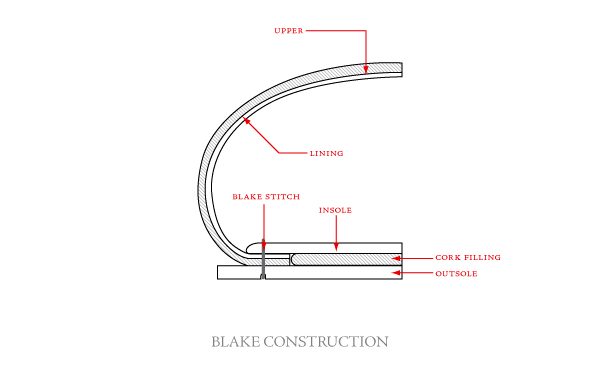
There are a few drawbacks however. The slimmer and thinner outsoles can be more prone to damage and water penetrates much easier. Since the stitch goes through the insole, there are also a few people that complain about irritation at the bottom of their feet.
Most people mistakenly think that you cannot resole a Blake shoe. However, you can but it needs a special Blake machine which can be rare to find. Additionally, due to the fact that every time you need to punch a hole in the uppers it can wear out the shoe. The number of resoles is limited, but not impossible.
Blake shoes are great for those who seek comfort and a close-cut sole.
4. Blake Rapid
The Blake Rapid method is a mixture of the Blake and Goodyear system. As you can see in the very helpful infographic below, it keeps the same Blake Stitch through the insole. This time however it adds a midsole which is in turn stitched to the outsole with a machine.

The machine is called the “Sutton Rapid outsole sewing machine” and that’s where the name comes from. You can resole them easier and also compromise the uppers less due to the construction. Additionally, Blake Rapid shoes are a little more waterproof but also less flexible.

It is impossible to distinguish between a Goodyear Welted and Blake Rapid shoe from the exterior. In general, this is a fine hybrid method that strikes a good balance.
5. Goodyear Welt
The most famous and iconic type of shoe construction. It is a laborious, intensive and very durable way to make high quality shoes. Who invented the method is a long story but the originator was August Destroy (1862). He then gave the patent to James Hanan and later it ended on the hands of Charles Goodyear Jr.
The biggest difference here is a canvas rib under the insole with glue and a strip of leather around the perimeter of the sole. The shoemaker fills the cavity between the insole and midsole with cork filling, while the welt is sewn to the midsole and outsole with a Rapid Stitch.

This two-level stitching makes for a very sturdy construction and ensures you can resole them as many times as you want. Welted shoes are also more waterproof and you can attach double (or even triple) outsoles. It does mean that they have a more chunky appearance and are less flexible.
This is by far my favorite construction method.
I would like to thank Jesper Ingevaldsson of Shoegazing for his correction on the origin of this method!
6. Hand Welted
There is not much to say about Hand Welting, because it is essentially the same technique like Goodyear. As the name implies, the main difference is that after lasting the shoe, the welting is done by hand instead of machine.
It is a lengthy process that ups the cost very much and very few shoemakers outside of bespoke use it. Hungarian Vass, Antonio Meccariello and Enzo Bonafe are a few. It is the pinnacle of good shoemaking and a great benchmark. As far as the sole stitching goes, it can be either by hand or machine.
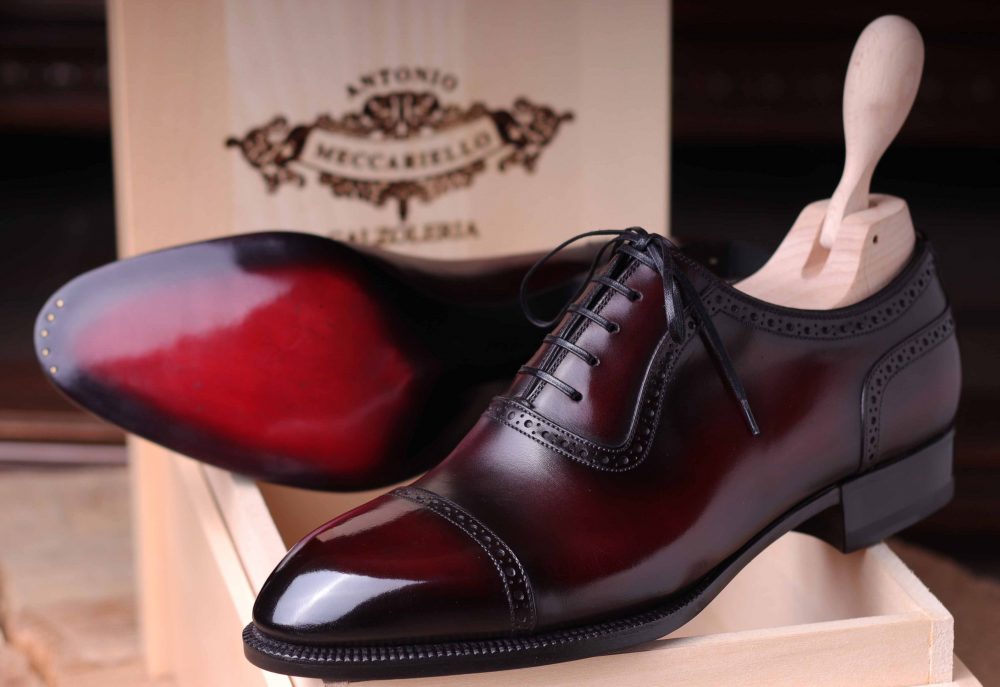
An advantage is that you can have a narrower, sleeker waist than the regular Goodyear Welt system. This is however purely aesthetic, albeit very beautiful. If you get one of those, congratulations!
7. Norvegese Construction
This is a very famous (yet quite rare) type of shoe construction that comes with many names. Norwegian, Goyser, Bentavenegna or Norvegese are the most popular and surprisingly comes from Italy. It is quite a close relative to the Goodyear Welt System in principal but with a little twist.
The uppers and the welt rib fold outwards to the exterior of the shoe instead of curving inside in a typical Goodyear construction. This creates a more waterproof shoe and is perfect for boots and chunkier country shoes. Another difference is the actual stitching. In the Norvegese construction there are at least two exterior visible stitches. The classic Rapid Stitch that connects the welt, uppers, midsole and outsole but also one that connects the welt and uppers directly to the insole.

In some cases, brands like Paraboot, Vass and Heinrich Dinkelacker have up to 3-4 exterior stitches in a braided format. These might be more of a statement and decorative element. It takes a special awl and hours of work in a process that reminds the laborious Hand-Welted construction. Up to 300 stitches are required to create a norvegese pair of shoes.

Due to the above reasons, Norvegese shoes are often a way for craftsmen and shoemakers to showcase their skill and abilities.
Regardless, you will get a bulkier but waterproof casual shoe that will stand the test of time and the harshest of terrains. If you see at least two exterior rows of stitching, you will know it is probably a Norwegian construction.
7.1 Storm Welt
The Storm Welt is a very interesting topic. It is a hybrid between the Goodyear Welt and Norvegese since it has similar stitching and the welt rib folds outside. In fact, many file it under the latter category.
What is the main difference then? While Norvegese uses two exterior stitches, Storm Welted shoes have only one. Here is a picture from my own Carlos Santos Boots.

Easy to identify now don’t you think?!
8. Bologna
Wow, Italy is really on a roll here. Yet another Italian construction donning its name from the homonymous city. It resembles the classic Blake but with a big change inside.
The uppers and lining continue all the way to the other side wrapping like a tube. The lining inside a small cavity where your foot rests has the Bologna Stitch which keeps it together. Think of a small trench on the inside.

Shoes with Bologna stitching have all the advantages of regular Blake. A very tight, close-cut waist and shape and extreme lightness. However, if it rains…better walk barefoot. Italians like this method very much and they make excellent loafers/slippers.
Guess which famous Italian Brand makes them.
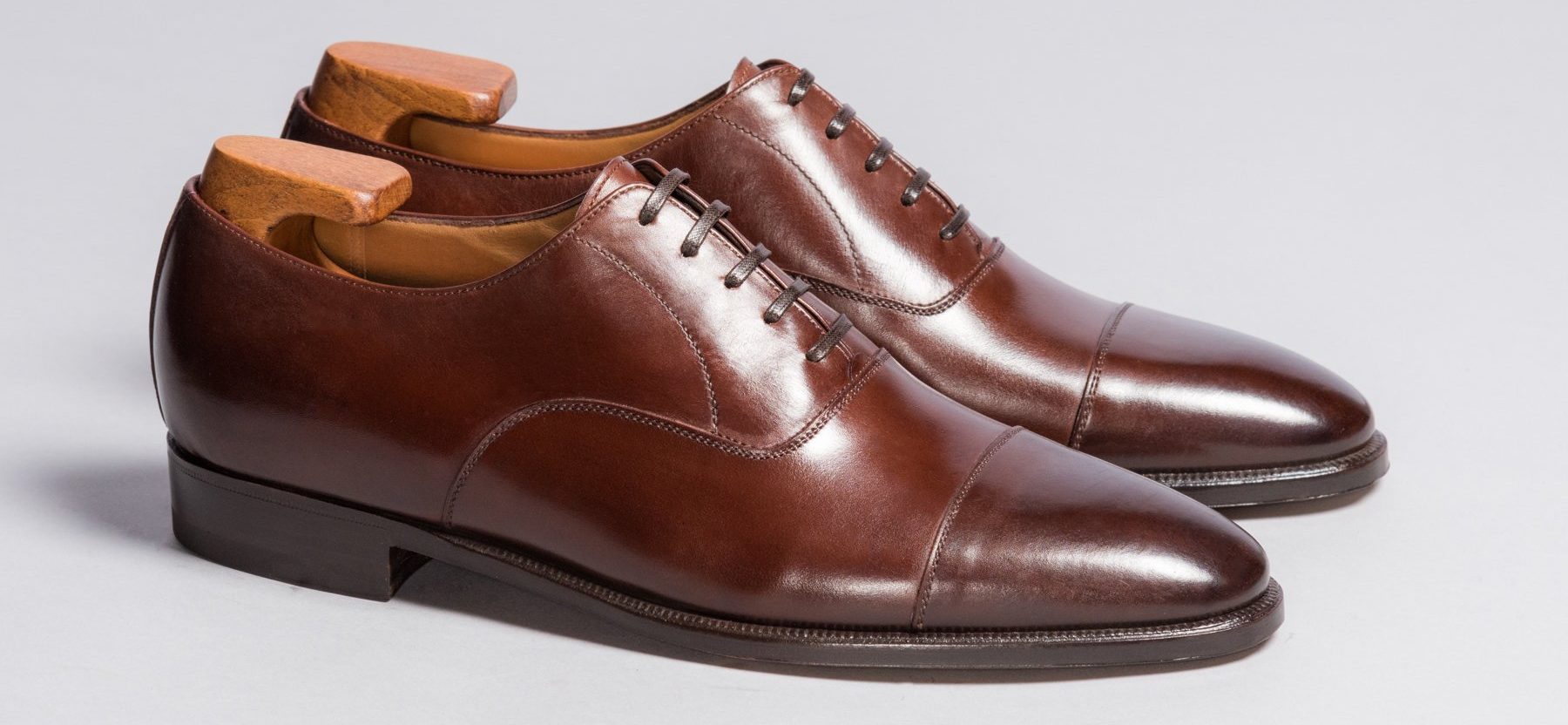
9. Stitch-Down
Stitch-Down is an old, rather primitive method of shoe construction. Once more, you can recognize it by the way the uppers fold in a unique way. The uppers are pulled outwards and sewn directly on to the midsole and outsole. This method makes good waterproof casual and sturdy shoes, since the idea was that water will flow outwards instead of inside the shoe.
While Stitch-Down is the overall technical term, the way the uppers fold produce variations.
9.1 Veldtschoen
Veldtschoen, or ‘veldskoen/velskoen’ in modern Afrikaans is a word derived from dutch and means Field Shoe. It has therefore a very special place in African shoemaking and while popularity comes and goes, there are still big brands out there making them. Viberg, Cheaney, Tricker’s and of course the Clarks Desert Boots.

In the picture above you can see what differentiates Veldtschoen from regular Stitch-Down. It is obvious that the former is a more advanced method. The uppers still fold outwards but there is a rectangular welt underneath. The classic Rapid Stitch connects everything to the outsole and an additional stitch binds the welt to the insole.
Other variations have an extra Rapid Stitch to the midsole, creating a very Norvegese look.
Update: Thanks to David at the comments section for adding that the uppers are in two layers which are sewn separately. It makes them extremely waterproof and a popular Field Boot.
9.2 San Crispino
Another variant worth mentioning briefly is San Crispino. Here, the upper folds around the insole and the stitch goes twice through them.

Alternative Types Of Shoe Construction
While these were more common methods to make a shoe, there are still many out there. Some are more accessible while others used by a handful of shoemakers. Here are some of them.
Moccasin
Higher end moccasins have a fully hand sewn construction right on the last. As you shape it around the last like a bag, you sew it by hand to create a very comfortable moccasin.
A way to tell this is to look underneath your own moccasins. In this method the material will be the same as the uppers. Comfort is the name of the game, but also more expensive.
Sewn-in-Sock /Ströbel
Usually a construction for athletic shoes. You sew the fabric above the insole to the uppers with a Ströbel machine to create a “sock”. After you cement the sole with adhesive.

Quite simple method but it needs a special machine.
Wood Pegged
An ancient, obscure construction method where you use wooden or brass pegs to attach the various parts. The fact that you nail them on the shoe means that there are holes and weak points.
Without going to much in detail, I advise you to check out this nice history article.
Rovesciata
Probably the most strange, yet fascinating and rare technique comes from Italy. Rovesciata in loose translation means inside out. This is because the uppers are hand-lasted inside out. Afterwards, you sew the sole around the edges by hand and subsequently turn around the uppers again.
They say these shoes are extremely comfortable.
Japanese Construction By Enzo Bonafe
Not much information on this one. We know that Enzo Bonafe calls it a hybrid between Hand-Welted and Blake construction. Creates a durable yet slim and elegant shoe.
Which Type Of Shoe Construction Is Best?
The truth is there is no answer to this question. People have different feet and needs. It all boils down to the situation. If you want an elegant, comfortable shoe and you live in an area where it doesn’t rain much, a Blake shoe is perfect.
If you want a more sturdy shoe with better longevity you should opt for Goodyear Welted shoe. Need something waterproof? Look no further than Norvegese/Storm Welt.
Some constructions work better with certain types of shoes such as boots or dress shoes. But in the end is personal preference and this guide gives you the tools to recognize them and make a better choice. Buy quality over quantity.
And that is the end of the “Types of Shoe Construction” article. It is always a blast going through history and infographics to uncover the secrets of shoemaking and leatherworking. Subscribe, leave a comment down below and I will see you next week for Misiu Academy’s 1 year anniversary!
Thank you for reading,
Kostas Mandilaris,
Misiu Academy




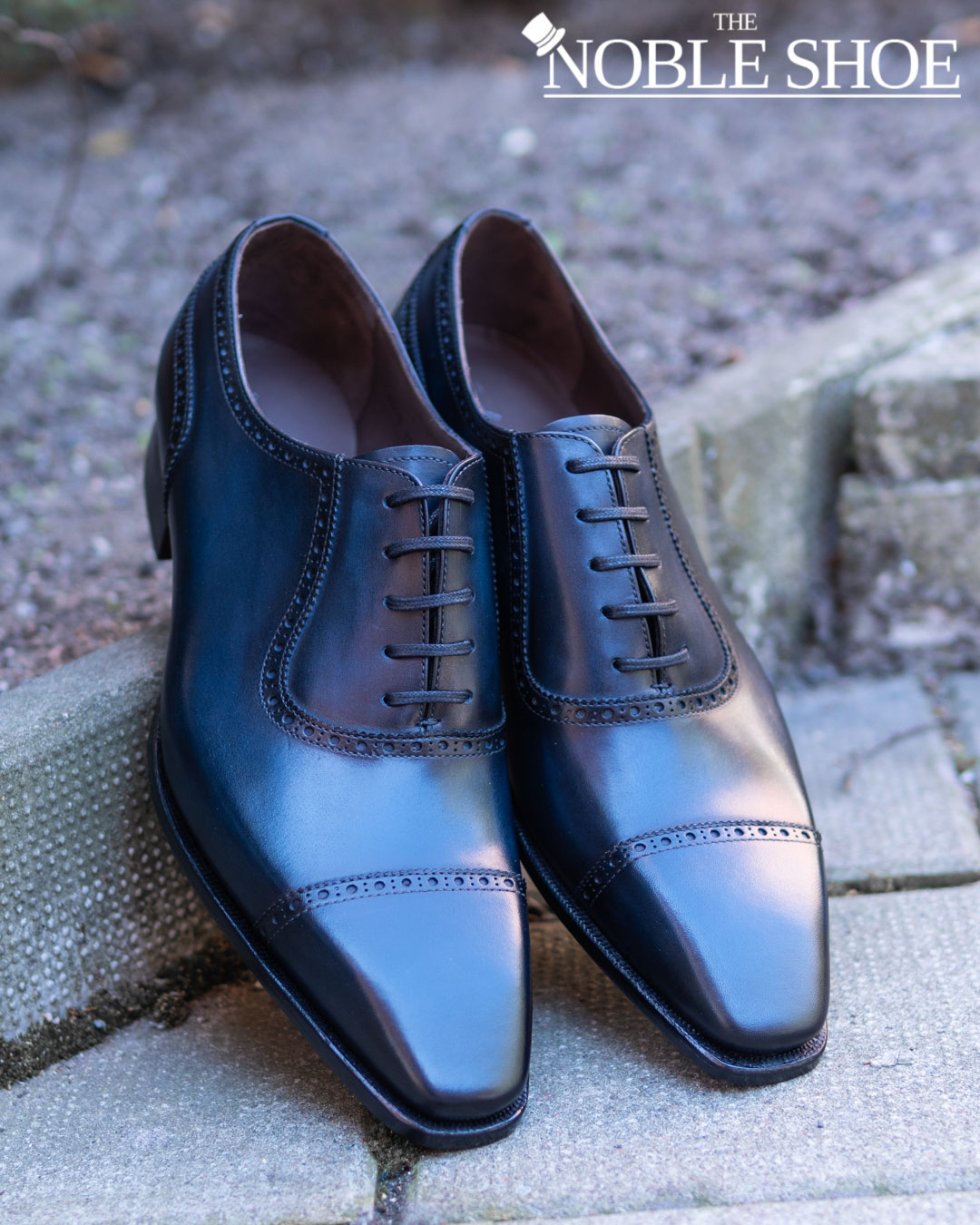
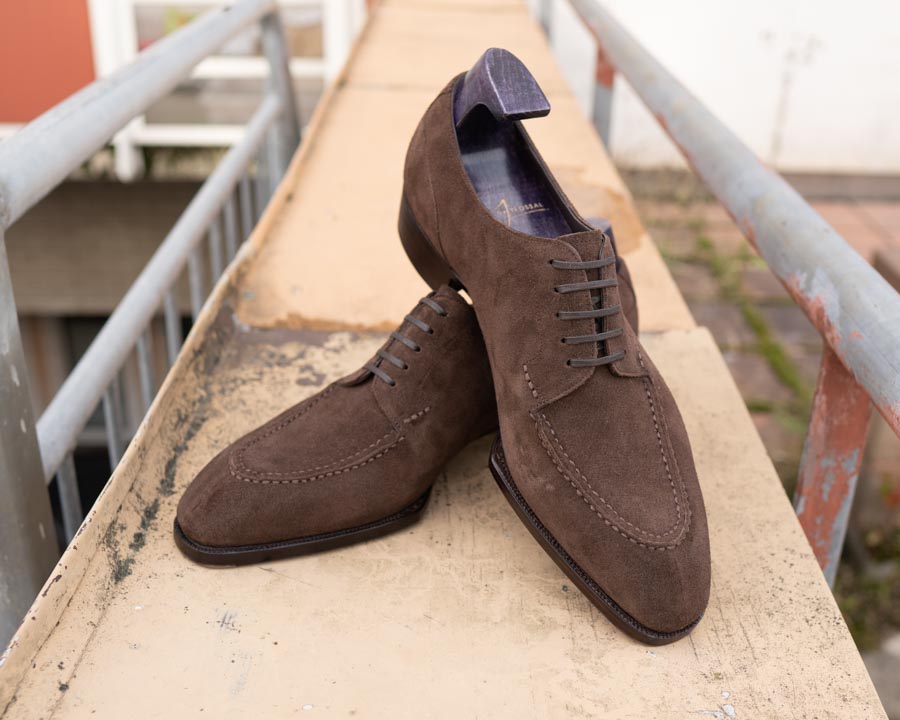
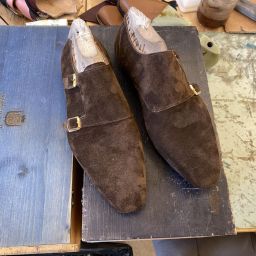
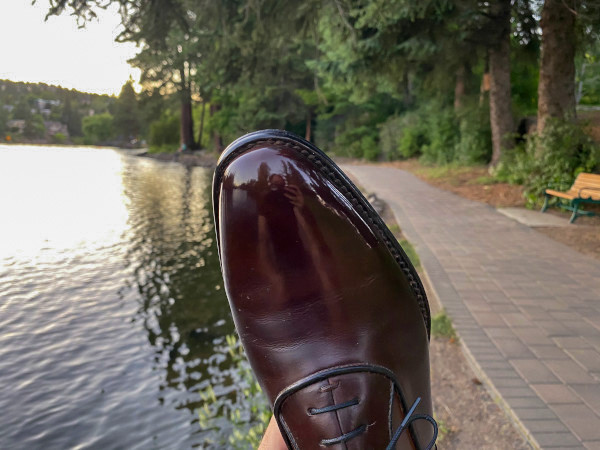


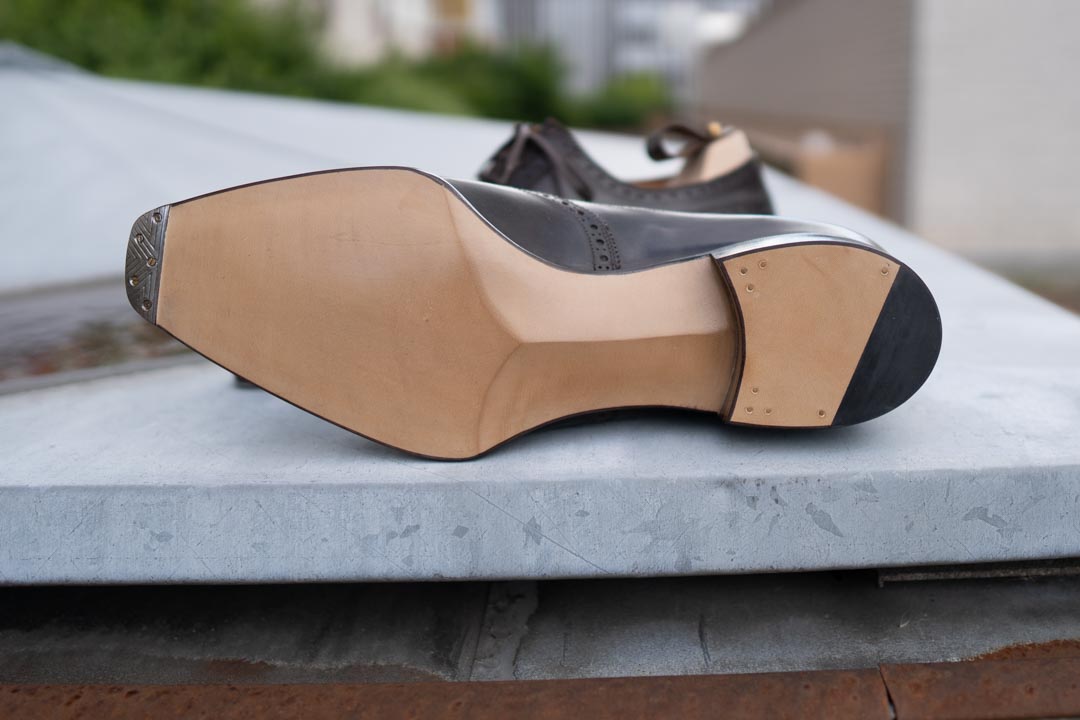
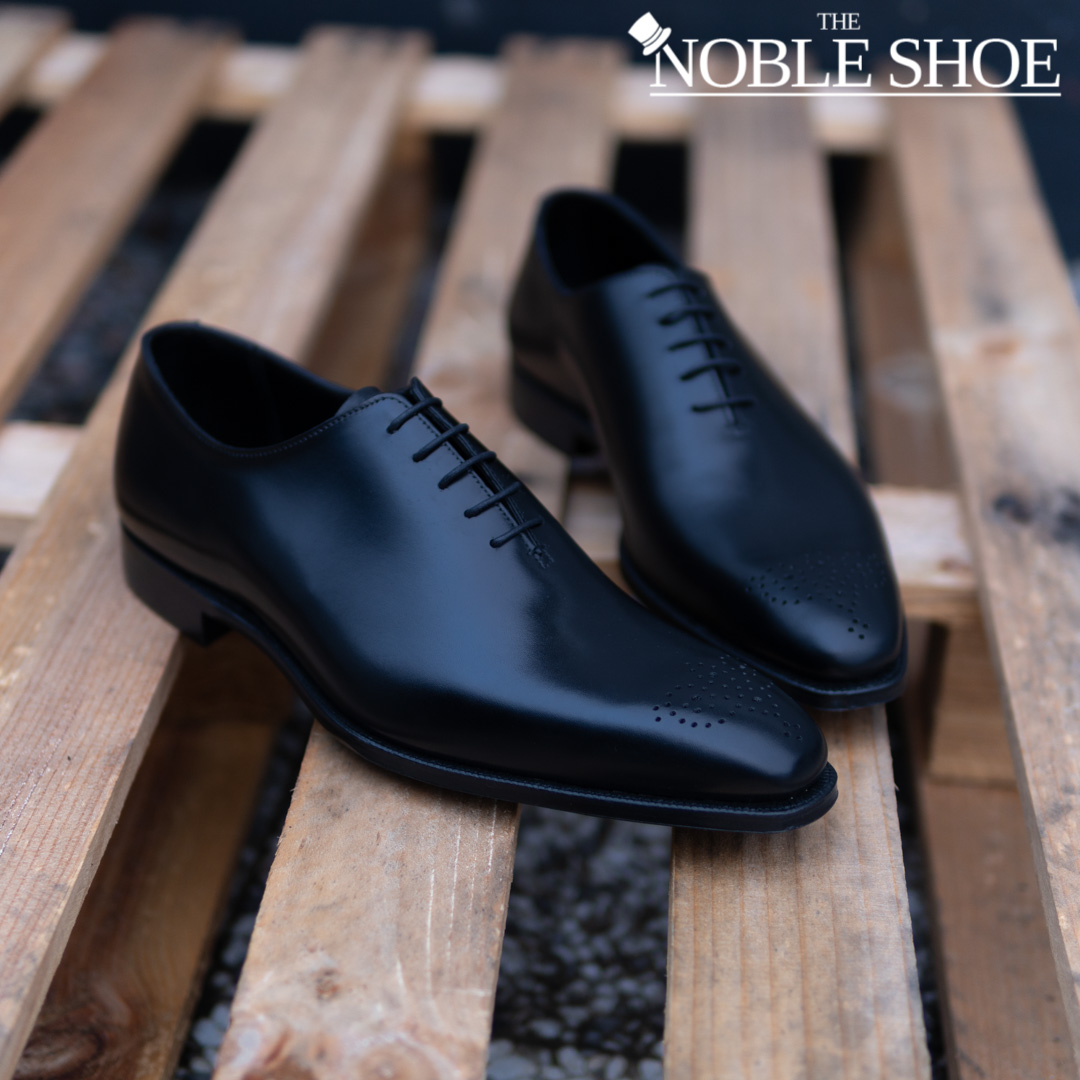

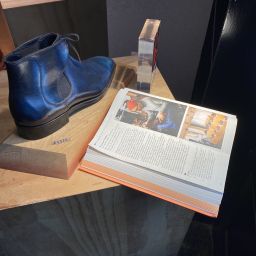


Thank you for this …most informative ..but ..you didn’t quite describe the Veltschoen accurately..your illustration shows that the upper is in two layers and both parts are sewn seperately ..this makes for an extremely waterproof and long lasting construction usually used in South African Field boots
Thank you David, I have added the small update underneath the section with your credit. I appreciate you taking the time to point it out and share your experience with us!
Hi David, in the Japanese illustration, the text calls the outer layer the “upper” (アッパー) and the inside layer the “inner lining” (インナーライニング). There are not two upper layers, at least not in the Japanese illustration of Veldtschoen construction.
Very useful, well-explained and comprehensive listing. Definitely the best I’ve come across on the Internet.
Just want to point out a spelling error: Under Blake stitching it should have read “seek” instead of “sick” in the sentence: “Blake shoes are great for those who sick comfort and a close-cut sole.”
Thank you for reading Frederik!
You are totally right and it is fixed now! Though “sick comfort” also sounds funny and cool! There are many more guides like these here!
An excellent, detailed article, Mr Mandilaris and I learnt a lot ! I was searching for information on good boating shoes( thinking of ordering from Rancourt) and now, I think I am highly tempted to look for a few other types as well !
Thank you!
Pary
Hi Parry! Thanks for reading and glad you found it helpful!
I recommend reading the other big guides such as Types of Shoe Leather and Types of Dress Shoes!
I hear good things about the Rancourt boat shoes. Even though it is a style I don’t like to wear, it is a very casual, comfortable shoe for every day simple wear!
Quite a nice article but there is one important inaccuracy. Hand welting is not the same as goodyear welting. Hand welting involves no glued canvas rib, it is a leather to leather stitching construction. For this reason it is structurally more sound… if you had the choice why would one want a construction that was reliant on gluing? it would be more accurate to say that goodyear welting sits somewhere between cemented construction and hand welting… preferable to the former, as more repairable, but not as structurally sound as the latter. Goodyear welting won out because you can welt hundreds of GYW shoes in the time it takes to welt a few pairs of hand welted shoes.
Hi Nick,
this article needs a bit of an update as it is older. If you check the rest of the articles you will see that I only buy high end shoes right now and I am actually studying to be a Bespoke Shoemaker.
However, I have 43 pairs of shoes and in 3 years I never had the need to resole any of them. Both are great and have their purpose. Of course, if I had to choose one I would take handmade over machine made any day of the week.
Best,
Kostas
[…] at the price point but continue to improve from a relatively high 840 Boston-based new balance of construction quality to a relatively new shoe and repetition after […]
Would you say these are bad then?
https://dundasfootwear.com/pages/type01
Pegged boots
Hi Lars,
I am not familiar with the brand and the styling of service boots does not appeal to me. However I can tell you that generally such a high toe spring is often a mark of lower quality.
These certainly seem to have a certain niche and profile.
I don’t see any form of welt here other than the brass pegs. The problem with these would be recrafting them I suppose.
If you are in Europe, I would look at Ostmo boots instead in Norway.
Thanks for fast reply.
“The upper is constructed out of heavy 2-4mm vegetable and combination tanned leathers and no inner lining to avoid blisters, trapped moisture and unnecessary wear.
A triple vegetable tanned leather sole is brass screwed to the insole rather than sewn to the upper”
From the site..
The shoes are holding for decades according to customers…
I would be very interested to see how a 4 mm veg tanned leather is lasted by hand (I assume they use a machine?) as it’s exceptionally stiff.
I also don’t get the inner lining part.
Hand-welted and hand-sewn shoes can also last for decades with proper care and maintenance.
However, these are a completely different type of shoe.
If the customers say so, well I am happy for them.
Personally, I never wear Service Boots but that’s just the way I dress.
If you like them and you have the budget, go for it.
The owners look like nice blokes. I can read and understand Norwegian and their explore page was quite cool and a nice story. With their connection to nature and exploration, such boots make sense.
Tanks for the input.
Best regards
Lars
[…] shoes that are made with high-quality materials and are built to last. Look for shoes that have a sturdy construction and are resistant to wear and tear. This is especially important if you will be wearing the shoes […]
[…] I had made my own leather shoes all the way from scratch (see here for info on shoe construction), 100% by hand back when I still doing my bachelor in physics, […]
[…] for quality construction: Hey Dude shoes are designed to last with durable materials and construction techniques. Look for reinforced stitching and high-quality laces to ensure your shoes stand up to regular […]
[…] of the primary explanations for this is the durability of Lugz footwear. Due to their construction, which allows them to withstand wear and tear from frequent use, these boots are a fantastic choice […]
[…] feet to its current status as an essential part of personal style. Well also explore some of the different methods used by modern shoemakers today to keep our shoes looking their very best! From stitching together layers of materials to […]
[…] Constructed Soles: Last but certainly not least, we confront the matter of poorly constructed soles. The sole of a sandal is its foundation, akin to the stage upon which the performance unfolds. When […]
[…] Pelle Santino Chelsea Boots are made using the traditional Goodyear Welted construction method to ensure the highest level of quality, finish, and longevity. Even after 150 years, shoemakers still consider the Goodyear Welt to be the finest method of shoe construction. […]
Regarding cemented sole shoes, you say: “Almost everything you will see by fast fashion brands like H&M, Aldo, Ecco and even expensive luxury brands are cemented. The worst part is that the don’t really tell you about it. I would compare cemented shoes to suits with fused canvasses. They will initially look ok, but after a while it is all over.” But it’s worse than that, they not only do not tell you about it, they actively seek to disguise the lack of a real welt by simulating stitching, usually molded into the plastic, visible from both the bottom, i.e., sole view, and from the top or edge. And they usually give away the con by having the stitches be differently sized, top vs. bottom, which means the holes can’t possibly match up. Of course, the lack of the middle layer in the sole is also a giveaway. And I think your analogy to suits with fused canvasses is absolutely spot-on.
Sorry to have taken so long to comment, only today did I discover the site with your correctly harsh and perceptive review of Allen Edmonds shoes, and found this also. Keep up the good work!
Thank you Barry, I appreciate it and agree with you. It is always better to invest in less, but higher quality items that will last you for life.
I have never had to repair my shoes (I have many though) and all my suits are in great shape. The only part that I found weak in many brands is the trousers easily ripping at the crotch.